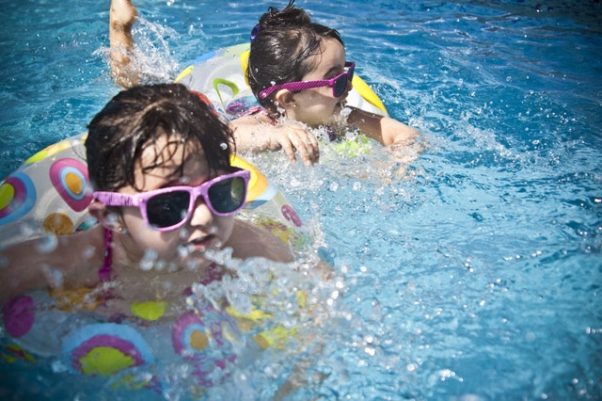Tips to Stay Safe in the Water This Summer
Summer means fun in the sun, but also in the pool, at the beach or on the lake. So it is important to know how to stay safe while enjoying the water.

An adult should supervise young children at all times when swimming. Being nearby but reading, chatting with a friend or using a phone does not count as supervision since it only takes seconds for a child’s head to go under water and not come back up. (Photo: Pixabay)
Unlike in the movies where people flail, thrash about and yell for help before they go under, in reality drowning is usually a quick and quiet occurrence.
According to the Centers for Disease Control and Prevention, drowning is among the leading causes of unintentional injury-related death for children, especially those younger than five years old. And it can happen in just a few inches of water.
“Any depth of water in which the child’s face can be submerged is dangerous,” said Dr. Rebecca King, a family medicine physician at Penn State Health Milton S. Hershey Medical Center. “Children have died in sinks, bath tubs and kiddie pools without even their whole body being submerged.”
That is why it is crucial to be vigilant when children and water mix.
“You must watch kids at all times,” King said. Being nearby but reading, chatting with a friend or using a phone does not count as supervision. “You can’t be distracted. It only takes seconds for a child’s head to go under water and not come back up.”

Inflatable arm floaties or tube rings that go around the waist aren’t good substitutes for life vests because they can deflate.
(Photo: Juan Salamanca/Pexels)
Children younger than five should always have an adult with them when they are in water, and they should always wear a life vest. Children older than five who are not strong swimmers should also wear life vests and should stay within an arm’s reach of an adult.
King said inflatable arm floaties or tube rings that go around the waist aren’t good substitutes for life vests because they can easily deflate and have been associated with drownings.
The American Academy of Pediatrics used to recommend that children wait until age four to learn how to swim, but now says lessons could be beneficial for toddlers as young as a year.
Parents of children who swim a lot – or any adult who supervises children in water — should learn how to perform cardiopulmonary resuscitation because being able to do it in an emergency situation can be life-saving.
For adults, King says it best to wear a life vest when on watercraft — even if it is not the law – and to be smart about drinking alcoholic beverages when planning to boat or swim. A person who has been drinking may not pick up on dangers they would notice if sober – such as how far the ocean current has pulled them from shore or that they are nearing a part of a lake where underwater plants could entangle them.
“Just as you wouldn’t drink and drive, you don’t want to drink and swim,” she said. “Anytime you are impaired, your body can’t react in time to make life-saving decisions.”
Article by Penn State Health Milton S. Hershey Medical Center




